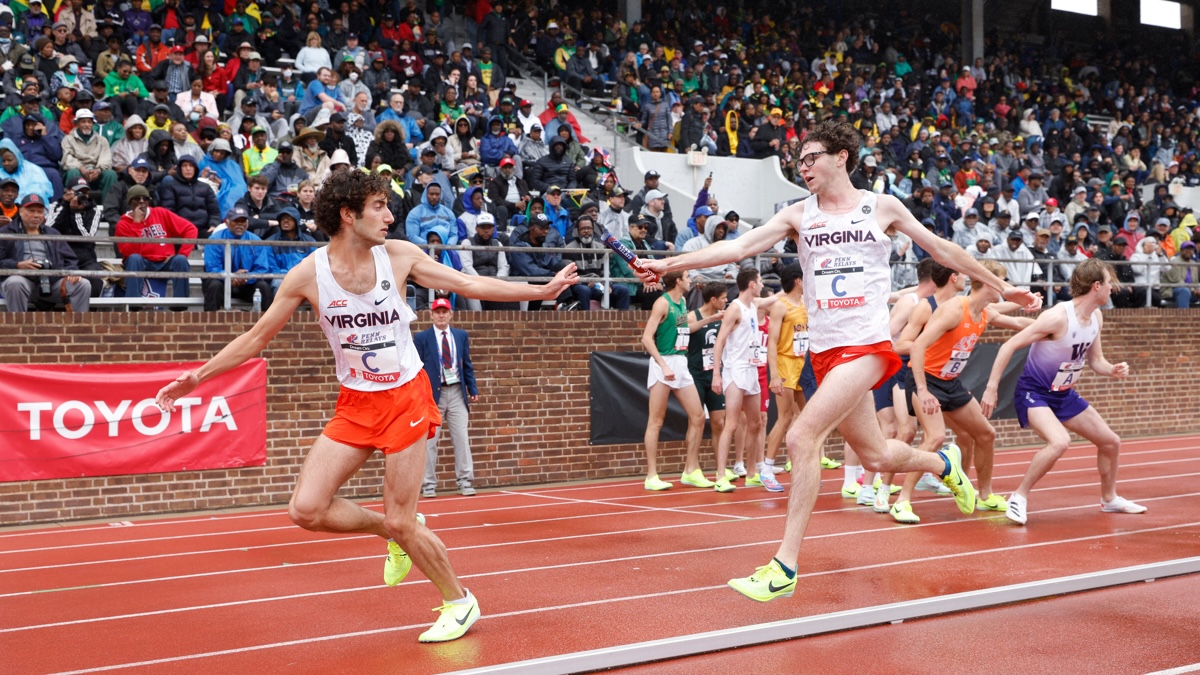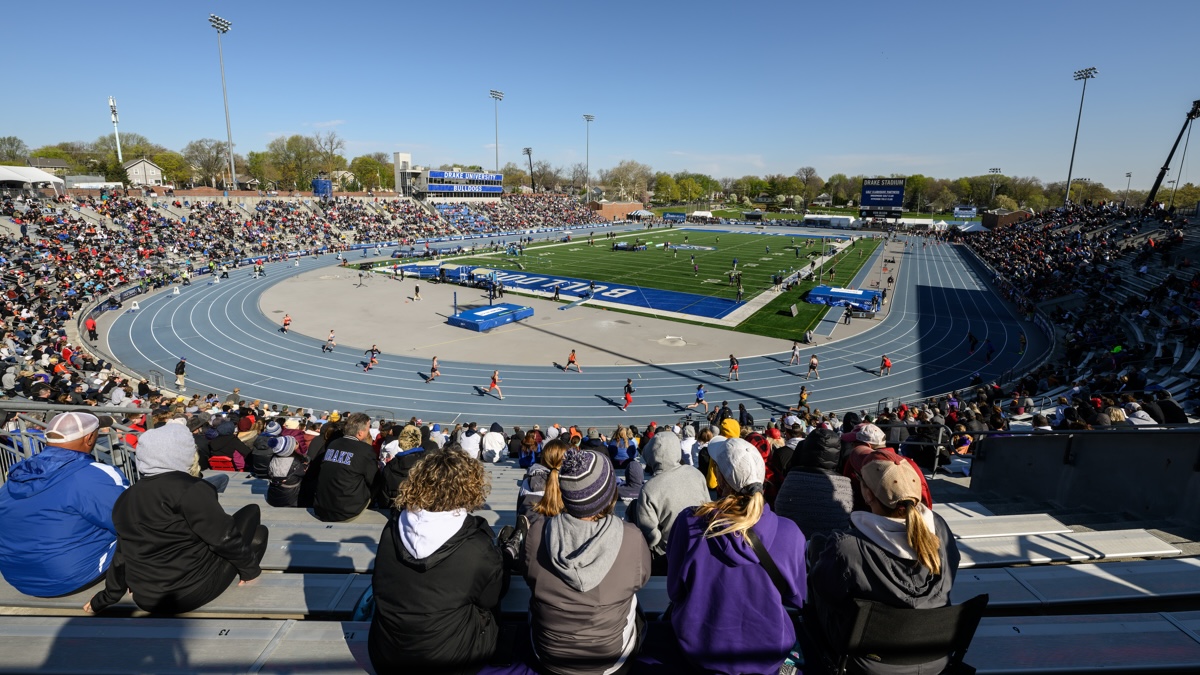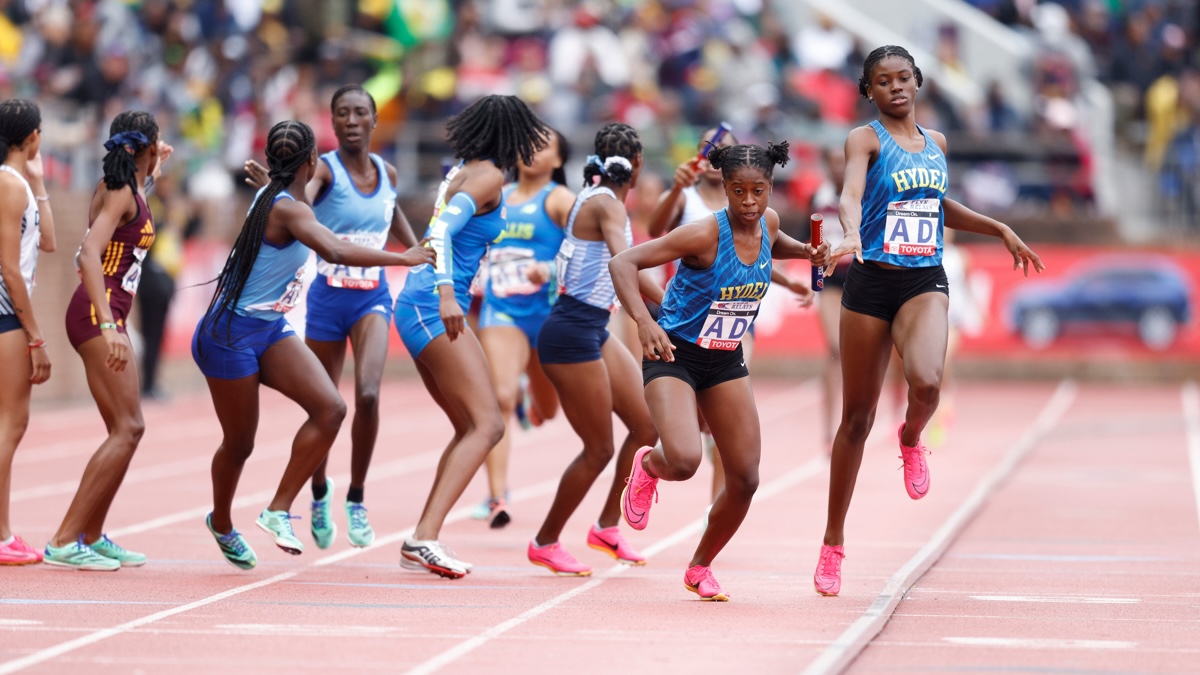Drake Relays, Penn Relays Feature Elite Track and Field Competition
More than 27,000 athletes will compete at the two events this week in Des Moines and Philadelphia
Posted On: April 22, 2024 By :The eyes of the track and field world will be laser focused on Paris this summer as the best athletes on the planet compete for Olympic gold.
But several months before that, the Penn Relays in Philadelphia and the Drake Relays in Des Moines, Iowa, signal the blooming of track and field season around the country.
Each event is more than 100 years old, with the Penn Relays — which started in 1895 — predating the original Olympic Games and setting the standard for modern relay races.
“The Penn Relays were the first group to ever use batons during relay races — before that, relays were just done by slapping hands,” said Aaron Robison, associate director of the Penn Relays. “Exchange zones came out of the Penn Relays, where you had to hand off the baton in a certain area, otherwise you’d be disqualified. So the Penn Relays helped in standardizing not only the sport of track and field, but more specifically the relays themselves.”
The Drake Relays’ inaugural event was in 1910 and it was the first track and field event to be broadcast live on radio in the 1920s. In the 1930s, the meet director had the foresight to work with local WHO radio to hire an upstart broadcaster named Ronald Reagan, who broadcasted the Drake relays for several years.
“I think there’s a misconception that the Penn Relays and the Drake Relays are competitors,” said Blake Boldon, director of the Drake Relays. “We have both really played a cultural role, in different ways. And in both cases, the events are a rite of passage for spring, an opportunity for the best local high school athletes to compete in a venue alongside the best collegiate athletes and some of the world’s greatest athletes.”
The Penn Relays will take place April 25–27 at Franklin Field at the University of Pennsylvania. The Drake Relays take place over the course of the week, with the main events happening April 25–27. So why are these two events happening at the same time?

“That dates back long before any of us were here on this earth,” Robison said with a laugh. “The Penn Relays through the late 1890s, early 1900s and 1910s was a popular event, but at that time, getting across the country to Philadelphia was very challenging for a lot of people. There were several different groups that had created a relay-type event similar to the Penn Relays. And the one that stuck the best was Drake.”
“I don’t see it as a bad thing,” Boldon added. “In both cases, it’s an opportunity for track and field to play center stage in the media market. And that’s probably more so true here in Des Moines because we’re not competing with the Eagles, Phillies, Flyers or 76ers. We really are the story in our community and across our state.”
How culturally significant are the events? In 1961, when ABC decided to do their inaugural Wide World of Sports broadcast, it took place dually in Des Moines and Philadelphia for the Drake and Penn Relays. At that point in time, it was cutting edge to do a live broadcast from two different locations. The interweaving races and events in Des Moines, alongside races and events in Philadelphia, put both events on the national stage.
Philly and Des Moines See Huge Impact
Fast forward 63 years and the two events are stronger than ever.
The Penn Relays have a staggering 17,000 competitors over the course of the three days (Robison estimated that about 13,500 of the Penn Relays athletes are high school age). Franklin Field is active from 9 a.m. to 10 p.m. on Thursday and Friday, will finals action taking place on Saturday from 9 a.m. to 6 p.m.
“There’s just a tremendous amount of efficiency,” Robison said. “The way I describe it is that the infield of Franklin Field almost looks like an Amazon warehouse where you’ve just got things moving in constant directions in a constant flow. We have the gun going off every minute and 45 seconds for a new race.”
The average three-day total attendance for the Penn Relays is about 110,000 people, but that number can spike dramatically, as it did in 2010 when Usain Bolt competed and 60,000 people showed up on the final day.
“It is the largest annual event in the state of Pennsylvania by far. And it is definitely the largest event that the city of Philadelphia has annually,” Robison said. “We have 17,000 athletes from 15 different countries all coming into one city over the course of three days, and then 100,000-plus fans. You can put two and two together and figure out what that financial impact is on a city like Philadelphia.”

The Drake Relays have around 10,000 competitors, and Greg Edwards, president and chief executive officer at Greater Des Moines Convention & Visitors Bureau, says the last economic impact estimate a few years ago was about $8 million for the city.
“It’s an annual event that we embrace wholly because of all the people it brings in,” Edwards said. “They utilize about 8,500 hotel room nights, with their peak nights being about 3,500, which is pretty substantial. Our metro area has a little over 14,000 rooms, so it’s a huge impact. It’s huge visibility for the community too. Drake, because of what they’ve done with the relays, has put us on the map. Which has then led to us hosting NCAA championships, USA Track & Field championships and AAU Junior Olympics. So it’s huge asset to what we do in the sports world.”
The world of Penn and Drake Relays is nothing new for Boldon. Prior to working for Drake, he worked at the Penn Relays and was the head cross country coach at the University of Pennsylvania.
Boldon, Edwards and the rest of the Des Moines team have created a special week of events around the city. The Drake Road Races — a 5K and 10K run that begin and end at the stadium after going through downtown Des Moines — will have 3,000 participants. On April 22, there will be a pole vault competition at Jordan Creek Town Center mall. The Grand Blue Mile on April 23 will again have members of all ages running through downtown. And then on April 24, there is a shotput showcase featuring eight athletes.
“Greg Edwards and Visit Des Moines are terrific partners,” Boldon said. “They help us logistically and with hotel partners, with hospitality. They really go out of their way to make sure our guests get the best possible experience in Des Moines. And this year especially, they’ve really placed extra resources behind our vault at Jordan Creek Town Center. They continue to identify Des Moines as an international and national destination for special events, because the Drake Relays will be broadcast live on a regional sports network and streamed globally.”
World Class Competition
The Penn and Drake Relays are always extremely competitive events but in an Olympic year, everything turns up a notch.
“Every American track and field athlete that has a chance is training and they’re all preparing for the U.S. Olympic Trials,” Boldon said. “It also globally takes on a larger significance for us, as we have been contacted by multiple international federations to see if we would host their delegation. So the Chilean team will have a representative in the field events (and) the Indian Federation will have representation in our middle- and long-distance events. And that is unique to an Olympic year.”

The Penn Relays always has an international flavor, specifically when it comes to Jamaica. In 1964, Kingston College in Jamaica first came to the Penn Relays and that opened the pathway for foreign athletes.
“Other than the United States, Jamaica has the most athletes that are in this event,” Robison said. “Just over 100 Jamaican high schools will be here. And it totals just under 1,000 total Jamaican high school athletes.”
That it’s an Olympic year does not change much when it comes to the planning of the Penn Relays, but it does increase interest.
“It’s an Olympic year, so everybody’s more interested to see what it’s going to look like in Paris, so more eyeballs are on the event,” Robison said. “The Jamaicans want to know who’s going to make their relay teams. And so there’s certainly more attention in an Olympic year and it may mean that we see a boost in how many people watch the event on TV.”
Hundreds of Olympic medalists have competed in both the Penn and Drake Relays. Names like Usain Bolt, Michael Johnson, Carl Lewis, Jesse Owens, Wilma Rudolph, and many more. And it’s also a Paralympic year, which means a spotlight on Para athletes as well.
“We have a robust partnership with the U.S. Olympic and Paralympic Committee with an emphasis on Para track and field,” Boldon said. “So this year, for the first time, we’re hosting Para seated throws, including world record holder Justin Phongsavanh, who is an Ankeny (Iowa) native. This will be his first time throwing in the Drake relays in his home state since he was tragically shot and paralyzed in 2015.”
Both the Drake and Penn Relays are World Athletics Continental Tour silver events, which adds quite a bit of juice to the competition for the professional athletes involved.
“The Continental Tour are events all across the world,” Robison said. “There’s not very many in the United States, but we and Drake are both silver level, and it elevates the event to those athletes who are competing in it. They acquire more points towards their Olympic and World Championship qualification purposes.”
With 27,000 athletes competing between the two events, Robison and Boldon gave some suggestions on spotlight events.
For the Penn Relays this year, the high school boys 4×400 meter relay will include some serious speed from two countries: “We have five high school teams that have run 3:10 or faster, and just to put it in perspective, 3:10 would place at most college conference meets. It’s ridiculously fast. The U.S. high school record in the 4×400 is 307,” said Robison.
Three-time Olympian and Des Moines native Lolo Jones will be inducted into the Drake Relays Athletes Hall of Fame on April 25, then April 27 she’ll run in the 100-meter hurdles against 2019 world champion Nia Ali: “The Drake Relays encourage the local kids to get into track and field, and we see a few that move on to the college ranks and eventually run professionally,” Edwards said. “And Lolo is a perfect example. This will be a great week for Des Moines.”
Posted in: Olympic Sports, Track & Field